|
Books Should Be Free Loyal Books Free Public Domain Audiobooks & eBook Downloads |
|
|
Books Should Be Free Loyal Books Free Public Domain Audiobooks & eBook Downloads |
|
History Books |
|---|
Book type:
Sort by:
View by:
|
By: William E. Barton (1861-1930) | |
|---|---|
 Life of Clara Barton - Volume 1
Life of Clara Barton - Volume 1
Clarissa Harlowe Barton was a pioneering American nurse who founded the American Red Cross. She was a hospital nurse in the American Civil War, a teacher, and a patent clerk. Since nursing education was not then very formalized and she did not attend nursing school, she provided self-taught nursing care. Barton is noteworthy for doing humanitarian work and civil rights advocacy at a time before women had the right to vote. She was inducted into the National Women's Hall of Fame in 1973. Volume 1 ends during the years just after the end of the Civil War. | |
 Life of Clara Barton - Volume 2
Life of Clara Barton - Volume 2
Clarissa Harlowe Barton was a pioneering American nurse who founded the American Red Cross. She was a hospital nurse in the American Civil War, a teacher, and a patent clerk. Since nursing education was not then very formalized and she did not attend nursing school, she provided self-taught nursing care. Barton is noteworthy for doing humanitarian work and civil rights advocacy at a time before women had the right to vote. She was inducted into the National Women's Hall of Fame in 1973.Volume 2... | |
By: William Elliot Griffis (1843-1928) | |
|---|---|
 Korean Fairy Tales
Korean Fairy Tales
Everywhere on earth the fairy world of each country is older and perhaps more enduring than the one we see and feel and tread upon. So I tell in this book the folk lore of the Korean people, and of the behavior of the particular kind of fairies that inhabit the Land of Morning Splendor. | |
 Japanese Fairy World: Stories from the Wonder-Lore of Japan
Japanese Fairy World: Stories from the Wonder-Lore of Japan
William Elliot Griffis born in Philadelphia in 1843, was an educator, author and Congregational minister. In 1870 he was invited to go to Japan in order to modernize the school system and became the Superintendent of Education in the Province of Echizen. Whilst there he became interested in the folk lore, legends and stories of the East and began to collect tales from the story tellers that he met with and the literature that he found there. The thirty four wonderful stories in this collection are some of the ones that he found and fortunately decided to share with us... | |
By: William Godwin (1756-1836) | |
|---|---|
 Enquiry Concerning Political Justice and its Influence on Morals and Happiness. Volume 1
Enquiry Concerning Political Justice and its Influence on Morals and Happiness. Volume 1
It was Godwin, in his Enquiry concerning Political Justice , who was the first to formulate the political and economical conceptions of anarchism, even though he did not give that name to the ideas developed in his remarkable work. Laws, he wrote, are not a product of the wisdom of our ancestors: they are the product of their passions, their timidity, their jealousies and their ambition. The remedy they offer is worse than the evils they pretend to cure. - Summary by Peter Kropotkin | |
By: William Gunion Rutherford (1853-1907) | |
|---|---|
 Story of Garfield
Story of Garfield
A short biography of the 20th U.S. President. Garfield was raised in humble circumstances on an Ohio farm by his widowed mother and elder brother. Before he was elected president in the Republican party he was first elected to Congress in 1862 as Representative of the 19th District of Ohio. Then to the Senate in 1880. His presidency lasted just 200 days—from March 4, 1881, until his death on September 19, 1881, as a result of being shot by assassin Charles J. Guiteau on July 2, 1881. | |
By: William H. Prescott | |
|---|---|
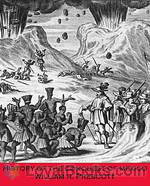 History of the Conquest of Mexico by William H Prescott (d. 1859)
History of the Conquest of Mexico by William H Prescott (d. 1859)
Much have I travell’d in the realms of gold,And many goodly states and kingdoms seen;Round many western islands have I beenWhich bards in fealty to Apollo hold.Oft of one wide expanse had I been toldThat deep-brow’d Homer ruled as his demesne;Yet never did I breathe its pure sereneTill I heard Chapman speak out loud and bold.Then felt I like some watcher of the skiesWhen a new planet swims into his ken;Or like stout Cortez, when with eagle eyesHe star’d at the Pacific – and all his menLook’d at each other with a wild surmise -Silent, upon a peak in Darien... | |
By: William Harrison Ainsworth (1805-1882) | |
|---|---|
 Windsor Castle, Book 1
Windsor Castle, Book 1
Book 1 - Ann Boleyn. The focus of the novels is on the events surrounding Henry VIII's replacing Catherine of Aragon with Anne Boleyn as his wife. During Henry's pursuit of Boleyn, the novel describes other couples, including the Earl of Surrey and Lady Elizabeth Fitzgerald, a match Henry does not support. However, some of the individuals oppose Henry and his desires for Boleyn, including Thomas Wyat who wants her for himself and Cardinal Wolsey, who uses his own daughter, Mabel Lyndwood, to lure Henry away from Boleyn... | |
By: William Henry Giles Kingston | |
|---|---|
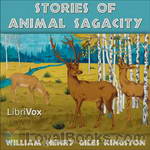 Stories of Animal Sagacity
Stories of Animal Sagacity
300+ short stories of how smart and savvy various individual animals have been seen to be, and in most cases a little moral is drawn from the story. | |
By: William Henry Hudson (1841-1922) | |
|---|---|
 Idle Hours In A Library
Idle Hours In A Library
“[these essays on Shakespeare, Pepys, Restoration novels, and bohemianism]—the results of many hours of quiet but rather aimless browsing among books, and not of special investigations, undertaken with a view to definite scholastic ends. They are, moreover, as will readily be seen, completely unacademic in style and intention.” Published in 1897. Hudson was a prolific author, naturalist, and ornithologist. His most popular book in the early 20th century was Green Mansions. | |
By: William Henry Pope Jarvis (1876-1944) | |
|---|---|
 The Great Gold Rush: A Tale of the Klondike
The Great Gold Rush: A Tale of the Klondike
Canadian journalist William Jarvis' gently fictionalized work recounts many of the countless fascinating tales of the Klondike Gold Rush in Canada's Yukon. (Introduction by Cathy Barratt) | |
By: William Holden Hutton (1860-1930) | |
|---|---|
 King and Baronage (A.D. 1135-1327)
King and Baronage (A.D. 1135-1327)
William Holden Hutton was a British historian and Dean of Winchester Cathedral. In this slim volume, Hutton writes of the long period of feudal anarchy following the death of King Henry I in 1135, during which Henry's implacable daughter, Mathilda, battled the ineffectual King Stephen. Hutton then describes the turbulent reign of the great King Henry II, the reigns of Kings Richard, John, Henry III, and of the first two Edwards, rulers who whether weak or strong, rigid or resourceful, were grimly opposed by their powerful barons. - Summary by Pamela Nagami | |
By: William Jackson | |
|---|---|
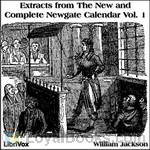 Extracts from The New and Complete Newgate Calendar
Extracts from The New and Complete Newgate Calendar
Volume One of the New and Complete Newgate Calendar, covering the years 1700 through 1723, relates stories of British trials, the persons accused and the crimes committed. It is primarily based upon contemporary newspaper and pamphlet accounts of these trials. Where the criminal is particularly well known, such as the highwayman, burglar and escape artist Jack Sheppard, other sources were used as well. The readings used here are selected to illustrate different aspects of the eighteenth century criminal world and the British legal system. | |
By: William Jennings Bryan (1860-1925) | |
|---|---|
 World’s Famous Orations, Vol. III: Great Britain - I
World’s Famous Orations, Vol. III: Great Britain - I
In 1906, William Jennings Bryan, himself a famous American orator, and Francis Whiting Halsey published a series of the most famous orations of all time. They are ordered by both geographic area and time period, ranging from Ancient Greece to their contemporary United States. The third, fourth, and fifth volumes of this collection concern British speakers. The speeches contained in this third volume are ordered chronologically. We begin in the year 710 AD with a speech on the Saints, and end this volume in 1777 with the realisation of the impossibility of regaining control over the American colonies. - Summary by Carolin | |
 World’s Famous Orations, Vol. VII: Continental Europe
World’s Famous Orations, Vol. VII: Continental Europe
This book contains a number of famous speeches and addresses from continental Europe between 300 CE to 1900 CE, organized around the following themes: Early Christianity, The Reformation, Modern France, Italy, Modern Germany, Hungary and Spain. - Summary by Chris Badenoch | |
By: William Joseph Long (1867-1952) | |
|---|---|
 Secrets of the Woods
Secrets of the Woods
The unique merit of this nature student rests in his fascinating style of writing, which invariably interests young and old; for without this element his pioneer work in the realm of nature would now be familiar only to scientists, introducing people everywhere into the wonderland of nature hitherto entirely closed to all. This is another chapter in the shy, wild life of the fields and woods. Little Toohkees, the wood mouse that dies of fright in the author’s hand; the mother otter, Keeonekh,... | |
By: William Lawson Grant (1872-1935) | |
|---|---|
 Chronicles of Canada Volume 26 - The Tribune of Nova Scotia: A Chronicle of Joseph Howe
Chronicles of Canada Volume 26 - The Tribune of Nova Scotia: A Chronicle of Joseph Howe
Joseph Howe (1804-1873) was one of Nova Scotia's greatest and best-loved politicians. He was instrumental in helping Nova Scotia become the first British colony to win responsible government in 1848. A Liberal, he fought against Canadian Confederation. This work highlights his life and causes. | |
By: William M. Clemens (1860-1931) | |
|---|---|
 Mark Twain; his life and work. A biographical sketch
Mark Twain; his life and work. A biographical sketch
As far as anyone has been able to establish, Will Clemens was NOT related to Sam Clemens , though they did become acquaintances. The 200-page biography Will Clemens wrote and published himself may have been the earliest full-length study of MT. It was published July 1,1892 as "No. 1" in a paperback series called "The Pacific Library," price 25¢, and did well enough to be republished in 1894 by a publisher in Chicago. Throughout the book Clemens relies mainly on other writers' previously published work. | |
By: William Makepeace Thackeray | |
|---|---|
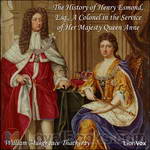 The History of Henry Esmond, Esq., A Colonel in the Service of Her Majesty Queen Anne
The History of Henry Esmond, Esq., A Colonel in the Service of Her Majesty Queen Anne
A classic Victorian novel and a historical novel rolled into one! Read about court and army life during the reign of Queen Anne – a story of Catholic – Protestant intrigue, and the party which aspired to the restoration of Bonny Prince Charlie. And, a good love story as well. | |
 Virginians
Virginians
It tells the story of Henry Esmond's twin grandsons, George and Henry Warrington. Henry's romantic entanglements with an older woman lead up to his taking a commission in the British army and fighting under the command of General Wolfe at the capture of Quebec. On the outbreak of the American War of Independence he takes the revolutionary side. George, who is also a British officer, thereupon resigns his commission rather than take up arms against his brother. | |
By: William Morris (1834-1896) | |
|---|---|
 Signs of Change
Signs of Change
In the 1880s William Morris, the artist and poet famously associated with the Arts and Crafts movement, left the Liberal Party and threw himself into the Socialist cause. He spoke all over the country, on street corners as well as in working men's clubs and lecture halls, and edited and wrote for the Socialist League's monthly newspaper. Signs of Change is a short collection of his talks and writings in this period, first published in 1888, covering such topics as what socialism and work should be, and how capitalism and waste developed. | |
By: William Patten (1868-1936) | |
|---|---|
 Junior Classics Volume 2: Folk Tales & Myths
Junior Classics Volume 2: Folk Tales & Myths
Compilation of tales designed and arranged for young people. This volume covers tales from the North, the Rhine, Greece and Rome, tales from the Hudson River, and animal stories. - Summary by DrPGould | |
By: William Penn Cresson (1873-1932) | |
|---|---|
 Cossacks: Their History and Country
Cossacks: Their History and Country
One of the earliest histories of the Cossacks to appear in English, with an emphasis on the exploits of famous Cossack leaders and Cossack struggles for political autonomy. Originally published in 1919. From the Foreword: "It is the proudest boast of the Cossacks of today -- as of their forbears of the Ukraine -- that they have never been classed as serfs nor for a moment lost their freeman's instinct for the principles of liberty. While the peasants of North Russia were bowed in shameful submission... | |
By: William R. Lighton (1866-1923) | |
|---|---|
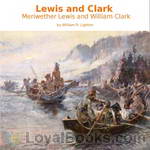 Lewis and Clark: Meriwether Lewis and William Clark
Lewis and Clark: Meriwether Lewis and William Clark
Meriwether Lewis and William Clark – In the years 1804, 1805, and 1806, two men commanded an expedition which explored the wilderness that stretched from the mouth of the Missouri River to where the Columbia enters the Pacific, and dedicated to civilization a new empire. Their names were Meriwether Lewis and William Clark. This book relates that adventure from it’s inception through it’s completion as well as the effect the expedition had upon the history of the United States. | |
By: William Ruschenberger (1807-1895) | |
|---|---|
 Elements of Geology
Elements of Geology
Elements of Geology is one in a Series of First Books of Natural History Prepared for the Use of Schools and Colleges. This succinct little textbook from 1846 presents an introduction to geology. The information, albeit not current, is still interesting and of use as a general overview of the subject as well as interesting look into the period. Please note that some of the information has changed considerably since this time. The author was a surgeon in the U.S. Navy and president of the Academy of Natural Sciences. - Summary by Amy Gramour | |
By: William S. Gilbert (1836-1911) | |
|---|---|
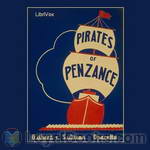 The Pirates of Penzance
The Pirates of Penzance
The Pirates of Penzance; or, The Slave of Duty is a comic opera in two acts, with music by Arthur Sullivan and libretto by W. S. Gilbert. The story concerns Frederic, who, having completed his 21st year, is released from his apprenticeship to a band of tender-hearted pirates. He meets Mabel, the daughter of Major-General Stanley, and the two young people fall instantly in love. Frederic finds out, however, that he was born on 29 February, and so, technically, he only has a birthday each leap year... | |
By: William Sangster (1808-1888) | |
|---|---|
 Umbrellas and Their History
Umbrellas and Their History
A whimsically serious look at the umbrella and society. | |
By: William Satchell (1861-1942) | |
|---|---|
 Greenstone Door
Greenstone Door
The Greenstone Door is a historical novel, set between 1830-1860’s New Zealand. The main character, Cedric Tregarthen, is remembering his past, telling the story both from his vantage point as an old man remembering, and as a young man experiencing his life. The story starts with the sack of the Te Kuma pa and the death of his father, his subsequent adoption by the trader Purcell and protection of Te Waharoa. He grows up among the Maori people, with his foster sister Puhi-Huia and his friend, Rangiora... | |
By: William Shakespeare (1564-1616) | |
|---|---|
 King Richard II
King Richard II
The Tragedy of King Richard II, by William Shakespeare, is the first of the history series that continues with Parts 1 and 2 of King Henry IV and with The Life of King Henry V. At the beginning of the play, Richard II banishes his cousin Henry Bolingbroke from England. Bolingbroke later returns with an army and the support of some of the nobility, and he deposes Richard. Richard is separated from his beloved Queen, imprisoned, and later murdered. By the end of the play, Bolingbroke has been crowned King Henry IV... | |
 Richard III
Richard III
Richard III is an early history play probably written and performed around 1592-93. It is the culmination of Shakespeare's earlier three plays about Henry VI, and chronicles the bloody career of Richard, Duke of Gloucester. As the play opens, the Wars of the Roses are over, King Edward IV (Richard's brother) is on the throne, and all is ostensibly well. The problem? Richard wants to be king - and he'll stop at nothing to realize his ambition. | |
 Henry V
Henry V
After the turmoil and uncertainty of Henry IV a new era appears to dawn for England with the accession of the eponymous Henry V. In this sunny pageant, the Chorus guides us along Henry's glittering carpet ride of success as the new king completes his transformation from rebellious wastrel to a truly regal potentate. Of course, there is an underlying feeling that the good times won't last, and this is all the more reason to enjoy the Indian summer before the protracted and bitter fall of the house of Lancaster. | |
 Titus Andronicus
Titus Andronicus
Titus Andronicus may be Shakespeare's earliest tragedy; it is believed to have been written in the early 1590s. It depicts a Roman general who is engaged in a cycle of revenge with his enemy Tamora, the Queen of the Goths. The play is by far Shakespeare's bloodiest work. It lost popularity during the Victorian era because of its gore, and it has only recently seen its fortunes revive. | |
 Antony and Cleopatra
Antony and Cleopatra
Antony and Cleopatra is a tragedy by William Shakespeare, believed to have been written sometime between 1603 and 1607. It was first printed in the First Folio of 1623. The plot is based on Thomas North's translation of Plutarch's Life of Marcus Antonius and follows the relationship between Cleopatra and Mark Antony from the time of the Parthian War to Cleopatra's suicide. The major antagonist is Octavius Caesar, one of Antony's fellow triumviri and the future first emperor of Rome. The tragedy is a Roman play characterized by swift, panoramic shifts in geographical locations and in registers, alternating between sensual, imaginative Alexandria and the more pragmatic, austere Rome. | |
 Henry VI
Henry VI
Henry VI, Part 1 is a history play by William Shakespeare, believed to have been written in 1591, and set during the lifetime of King Henry VI of England. Whereas 2 Henry VI deals with the King's inability to quell the bickering of his nobles, and the inevitability of armed conflict, and 3 Henry VI deals with the horrors of that conflict, 1 Henry VI deals with the loss of England's French territories and the political machinations leading up to the Wars of the Roses, as the English political system is torn apart by personal squabbles and petty jealousy. | |
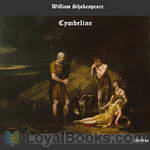 Cymbeline
Cymbeline
Cymbeline is one of Shakespeare's late romances, which (like The Tempest and The Winter's Tale) combines comedy and tragedy. Imogen, the daughter of King Cymbeline of Britain, angers her father when she marries Posthumus, a worthy but penniless gentleman. The King banishes Posthumus, who goes to Rome, where he falls prey to the machinations of Iachimo, who tries to convince him that Imogen will be unfaithful. Meanwhile, the Queen (Imogen's stepmother) plots against her stepdaughter by trying to plan a match between Imogen and her worthless son Cloten. | |
 Henry VIII
Henry VIII
This is Shakespeare's dutiful tribute to one of the most imposing and terrifying rulers in European history. The kingdom trembles as the giant monarch storms through his midlife crisis, disposing of the faithful Katharine of Aragon and starting a new life and, the king hopes, a line of succession with the captivating young Anne Bullen. Unlike his predecessors, Henry has no doubt about the security of his tenure on the throne, and dominates the royal court with absolute authority. The extent of the King's power is graphically illustrated by the fate of the Duke of Buckingham, who goes calmly to execution while deploring, not the unjust despotism of the king... | |
 King John
King John
The Life and Death of King John, a history play by William Shakespeare, dramatises the reign of John, King of England (ruled 1199–1216), son of Henry II of England and Eleanor of Aquitaine and father of Henry III of England. It is believed to have been written in the mid-1590s but was not published until it appeared in the First Folio in 1623. John (24 December 1166 – 19 October 1216), also known as John Lackland or Softsword, was King of England from 6 April 1199 until his death. His reign... | |
By: William Still (1821-1902) | |
|---|---|
 Underground Railroad, Part 1
Underground Railroad, Part 1
”It was my good fortune to lend a helping hand to the weary travelers flying from the land of bondage.” William Still. "Dear Sir:—For most of the years I have lived, the escape of fugitives from slavery, and their efforts to baffle the human and other bloodhounds who tracked them, formed the romance of American History. That romance is now ended, and our grandchildren will hardly believe its leading incidents except on irresistible testimony. I rejoice that you are collecting and presenting that testimony, and heartily wish you a great success... | |
By: William Tecumseh Sherman (1820-1891) | |
|---|---|
 Sherman’s Recollections of California, 1846-1848, 1855-1857, from his Memoirs
Sherman’s Recollections of California, 1846-1848, 1855-1857, from his Memoirs
This librivox recording comprises three chapters from American Civil War General William Tecumseh Sherman’s Memoirs. The chapters deal with a posting to California in his pre-Civil War military career in the years 1846-1848. While many of his colleagues saw action in the Mexican-American War, Sherman performed administrative duties in the captured territory of California. Along with fellow Lieutenants Henry Halleck and Edward Ord, Sherman embarked from New York on the 198-day journey around Cape Horn aboard the converted sloop USS Lexington... | |
By: William Wells Brown (1814-1884) | |
|---|---|
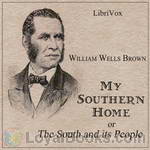 My Southern Home or, The South and Its People
My Southern Home or, The South and Its People
William Wells Brown was born a slave, near Lexington, Kentucky. His mother, Elizabeth, was a slave; his father was a white man who never acknowledged his paternity. Brown escaped slavery at about the age of 20. For many years he worked as a steam boatman and as a conductor for the Underground Railroad in Buffalo, New York. In 1843, he became a lecturer for the Western New York Anti-Slavery Society, and was a contemporary of Frederick Douglass.Brown went to Europe in 1849 to encourage British support for the anti-slavery movement in the United States... | |
 Three Years In Europe
Three Years In Europe
William Wells Brown was born a slave, near Lexington, Kentucky. His mother, Elizabeth, was a slave--his father a white man who never acknowledged his paternity. Brown escaped slavery at about the age of 20. For many years he worked as a steamboatman and as a conductor for the Underground Railroad in Buffalo, New York. In 1843, he became a lecturer for the Western New York Anti-Slavery Society, and was a contemporary of Frederick Douglass.Brown went to Europe in 1849 to encourage British support for the anti-slavery movement in the United States... | |
By: William Westgarth (1815-1889) | |
|---|---|
 Personal Recollections of Early Melbourne and Victoria
Personal Recollections of Early Melbourne and Victoria
Son of John Westgarth, surveyor-general of customs for Scotland, was born at Edinburgh, in June 1815. He was educated at the high schools at Leith and Edinburgh, and at Dr Bruce’s school at Newcastle-on-Tyne. He then entered the office of G. Young and Company of Leith, who were engaged in the Australian trade, and realizing the possibilities of the new land, decided to emigrate to Australia. He arrived in Melbourne, then a town of three or four thousand inhabitants, in December 1840.When the new colony was constituted Westgarth headed the poll for Melbourne at the election for the legislative council... | |
By: William Wordsworth (1770-1850) | |
|---|---|
 Place Of Burial In The South Of Scotland
Place Of Burial In The South Of Scotland
This poem is part of the "Ecclesiastical Sonnets," writen by Wordsworth between 1821 - 22. - Summary by David Lawrence | |
By: William Worthington Fowler (1833-1881) | |
|---|---|
 Woman on the American Frontier
Woman on the American Frontier
Many books describe the role of men during American history. However, at the same time, women did much: comforted, fought, helped, raised children, and much more. This book is full of mini-biographies of women in many places, and many ages- each chapter telling about a different subject. | |
By: Winfield Hazlitt Collins (1868-1927) | |
|---|---|
 Domestic Slave Trade Of The Southern States
Domestic Slave Trade Of The Southern States
This 1904 history of slavery in the southeastern United States reflects the state of knowledge at that time, of course. The text contains so many extensive quotations that it was unfeasible to indicate them as quotes in reading the text. The author was a professor of history and English at Claremont College, a North Carolina school that closed in 1917. A resource of more current thinking may be had at the well-regarded 1988 Dictionary Of Afro-American Slavery. - Summary by David Wales | |
By: Winifred Stephens Whale (1870-1944) | |
|---|---|
 Women of the French Revolution
Women of the French Revolution
One aspect of this subject of revolutionary women, their connection with the secret societies of the day I have purposely ignored. It is obscure and highly controversial. Unfortunately, though these societies have been much, written about, and especially of late, it has often been in a partisan spirit. This book will constantly deal with parties, but I trust not in the spirit of a partisan. Of the three methods of treating this subject, the strictly chronological method, the biographical, and a classification according to the play of ideas and the modes and fields of action, I have chosen the last... | |
By: Winston Churchill (1874-1965) | |
|---|---|
 The River War: An Account of the Reconquest of the Sudan
The River War: An Account of the Reconquest of the Sudan
When the self-proclaimed Mahdi (“Guided One”) gathered Islamic forces and kicked the Anglo-Egyptians out of the Sudan, he unleashed a backlash. With the image of the heroic General Charles Gordon dying at Khartoum, the British public was ready to support a war to reclaim the lost territories. And when the political time was right, a British-Egyptian-Sudanese expedition led by the redoubtable Herbert Kitchener set out to do just that.The river involved was the Nile. For millennia, its annual flood has made habitable a slender strip, though hundreds of miles of deserts, between its tributaries and its delta... | |
 A Traveller in War-Time
A Traveller in War-Time
This is a collection of a series of journalistic articles written during his travels throughout WWI era Europe that Churchill — the American author, not the famed British statesman — published in 1917; the book version came out in 1918. The writing is sharp, straightforward, and rarely sentimental, with loads of local color and occasional humor. | |
By: Winston S. Churchill | |
|---|---|
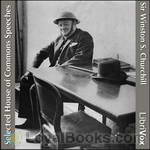 Selected House of Commons Speeches
Selected House of Commons Speeches
Sir Winston Leonard Spencer Churchill (1874 – 1965) was a British politician known chiefly for his leadership of the United Kingdom during World War II. He served as Prime Minister of the United Kingdom from 1940 to 1945 and again from 1951 to 1955. A noted statesman and orator, Churchill was also an officer in the British Army, a historical writer, and an artist. | |
By: Woods Hutchinson | |
|---|---|
 A Handbook of Health
A Handbook of Health
The Woods Hutchinson Health Series, A HANDBOOK OF HEALTHBy Woods Hutchinson, A. M., M. D. PREFACE Looking upon the human body from the physical point of view as the most perfect, most ingeniously economical, and most beautiful of living machines, the author has attempted to write a little handbook of practical instruction for the running of it. And seeing that, like other machines, it derives the whole of its energy from its fuel, the subject of foods--their properties, uses, and methods of preparation--has been gone into with unusual care... | |
By: Wright, Orville and Wilbur (1871-1948 / 1867-1912) | |
|---|---|
 The Early History of the Airplane
The Early History of the Airplane
The Brothers Orville (1871 - 1948) and Wilbur (1867 – 1912) Wright made the first controlled, powered and sustained heavier-than-air flight, on 17th December 1903. They were not the first to build and fly aircraft, but they invented the controls that were necessary for a pilot to steer the aircraft, which made fixed wing powered flight possible. The Early History of the Airplane consists of three short essays about the beginnings of human flight. The second essay retells the first flight: "This... | |
By: www.mikevendetti.com | |
|---|---|
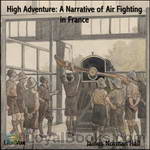 High Adventure A Narrative of Air Fighting in France
High Adventure A Narrative of Air Fighting in France
High Adventure A Narrative of Air Fighting in France by James Norman Hall; you will find this book although an exciting narrative has an unpolished feel because it was published in June of 1918 while Mr. Hall was a captive in a German POW camp. When he was captured behind enemy lines, the book was still a work in progress. The Armistice would not be reached until November of that year. Although he does not mention it in this book, Mr. Hall had already served the better part of 15 months with the British Expeditionary Forces, surviving the battle of Loos in Sept – Oct 1915, and upon which his excellent work “Kitchener’s” Mob is Based... | |
By: Xenophon | |
|---|---|
 Xenophon's Anabasis
Xenophon's Anabasis
Xenophon the Athenian was born 431 B.C. He was a pupil of Socrates. He marched with the Spartans, and was exiled from Athens. Sparta gave him land and property in Scillus, where he lived for many years before having to move once more, to settle in Corinth. He died in 354 B.C. “Anabasis” is a Greek work which meane “journey from the coast to the center of a country.” This is Xenophon’s account of his march to Persia with a troop of Greek mercenaries to aid Cyrus, who enlisted Greek help to try and take the throne from his brother Artaxerxes, and the ensuing return of the Greeks, in which Xenophon played a leading role... | |
By: Zitkala-Sa (1876-1938) | |
|---|---|
 Old Indian Legends
Old Indian Legends
Fourteen Old Indian Legends by Native American ( Dakota ) Author Zitkala-Sa. These Legends feature the exploits of Iktomi the Native American Trickster god. | |
By: Zorro A. Bradley | |
|---|---|
 Canyon de Chelly; The Story of its Ruins and People
Canyon de Chelly; The Story of its Ruins and People
A 1973 U.S. government publication describing the history and physical characteristics of this Arizona national monument within the boundaries of the Navajo Nation. - Summary by david wales | |
By: יוסף חיים ברנר Yosef Haim Brenner (1881-1921) | |
|---|---|
 עולה (Injustice), with excerpt from The Escaping Club
עולה (Injustice), with excerpt from The Escaping Club
This is a bilingual project. The first part, in Hebrew, is the story "Injustice" by Yosef Haim Brenner, written following the conquest of Palestine by the British troops during WWI. The story takes place on the Turkish side of the dividing line between the combating forces. An escaped British prisoner of war had taken shelter among a group of Jewish workers, who, following a heated discussion, turned him over to the Turkish army. The second part of this project, in English, is a chapter in the book "The Escaping Club," written in 1922 by the same British prisoner of war, the aviator A. J. Evans, who gave his account of the same event. | |
By: ‘Abdu’l-Bahá ‘Abbás (1844-1921) | |
|---|---|
 A Traveller’s Narrative Written to Illustrate the Episode of the Báb
A Traveller’s Narrative Written to Illustrate the Episode of the Báb
“This book is the history of a proscribed and persecuted sect written by one of themselves,” writes Professor Edward Granville Browne, the Cambridge Orientalist who translated this narrative. “After suffering in silence for nigh upon half a century, they at length find voice to tell their tale and offer their apology. Of this voice I am the interpreter.” This work is the story of the life of the Siyyid ‘Alí-Muhammad-i-Shírází (1819-1850), known as the “Báb”, which is Arabic for “Gate”... | |